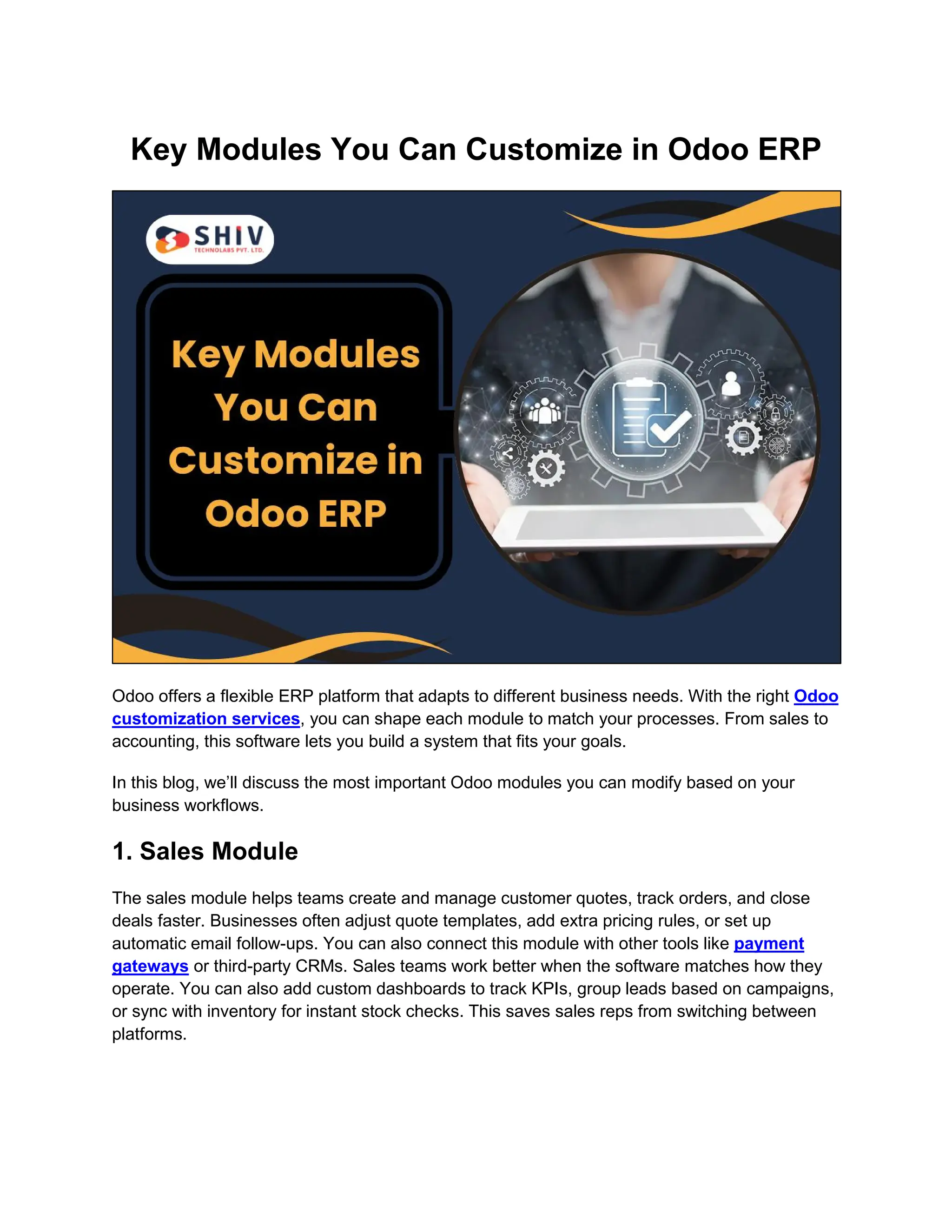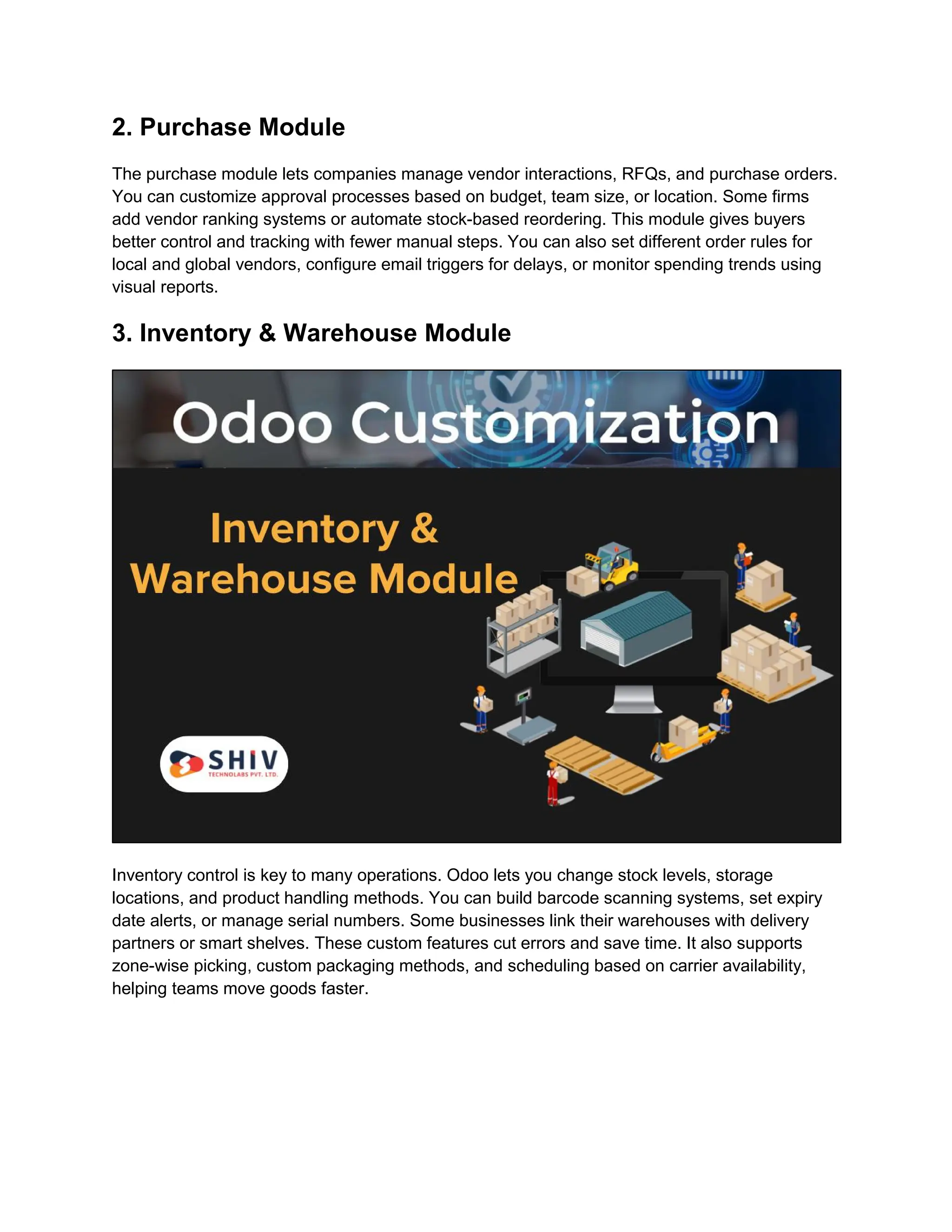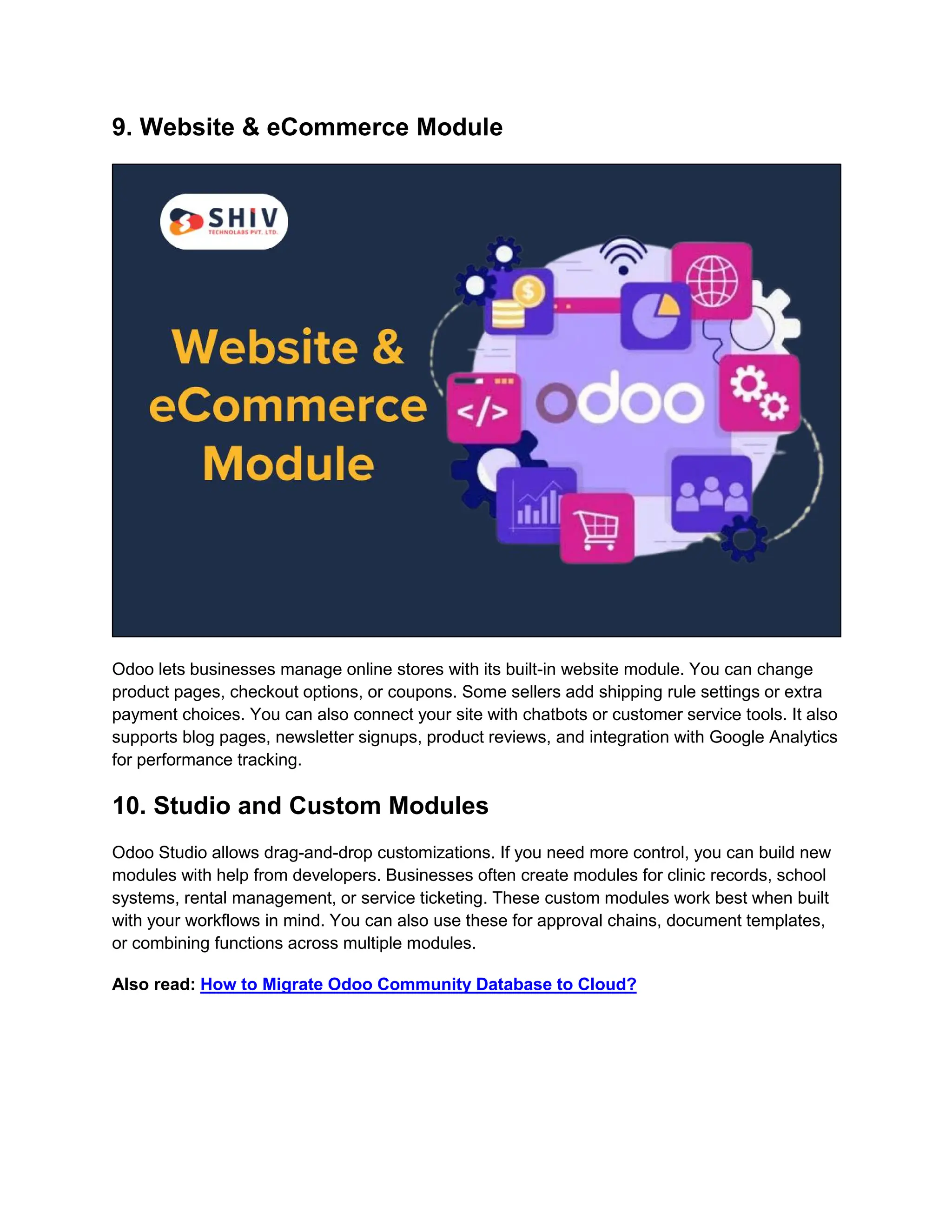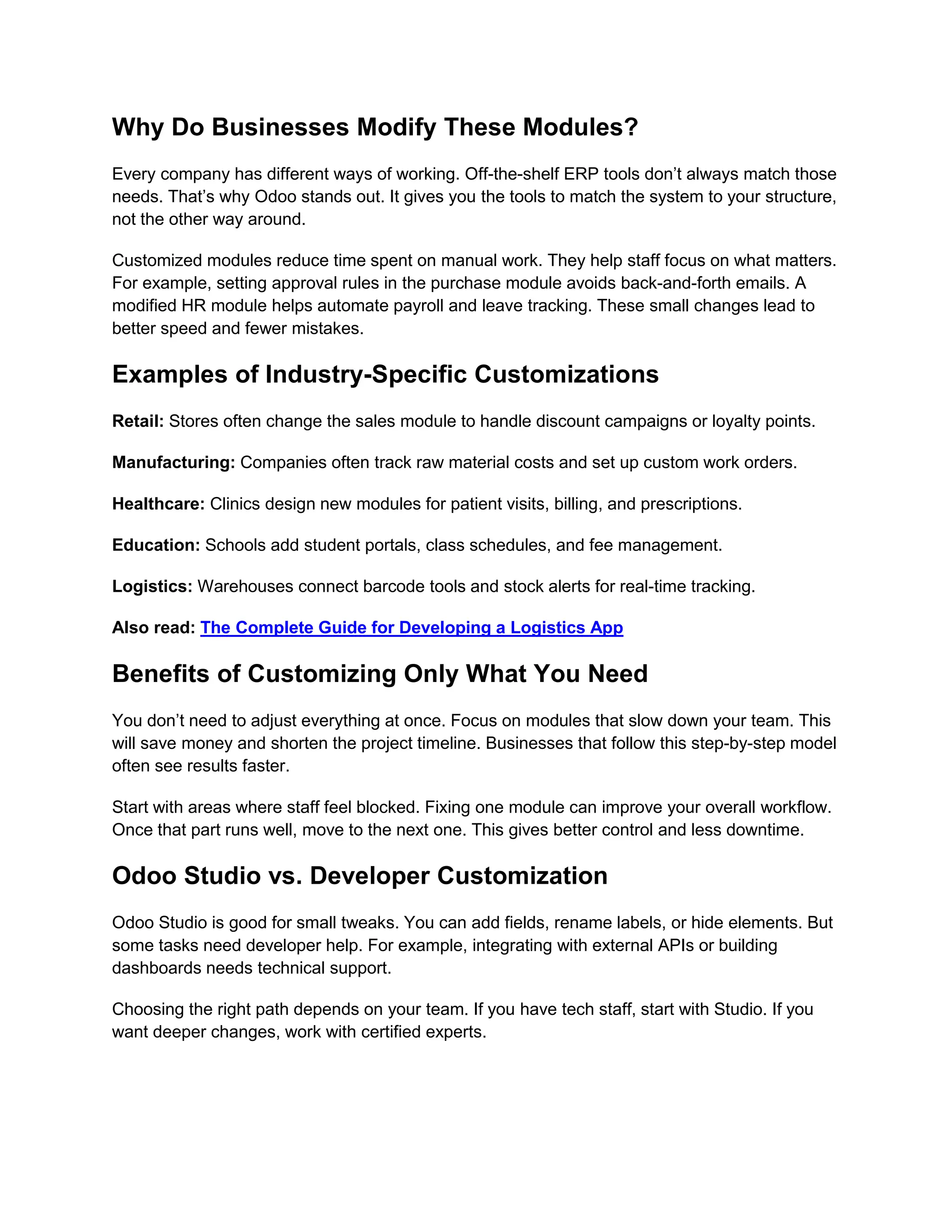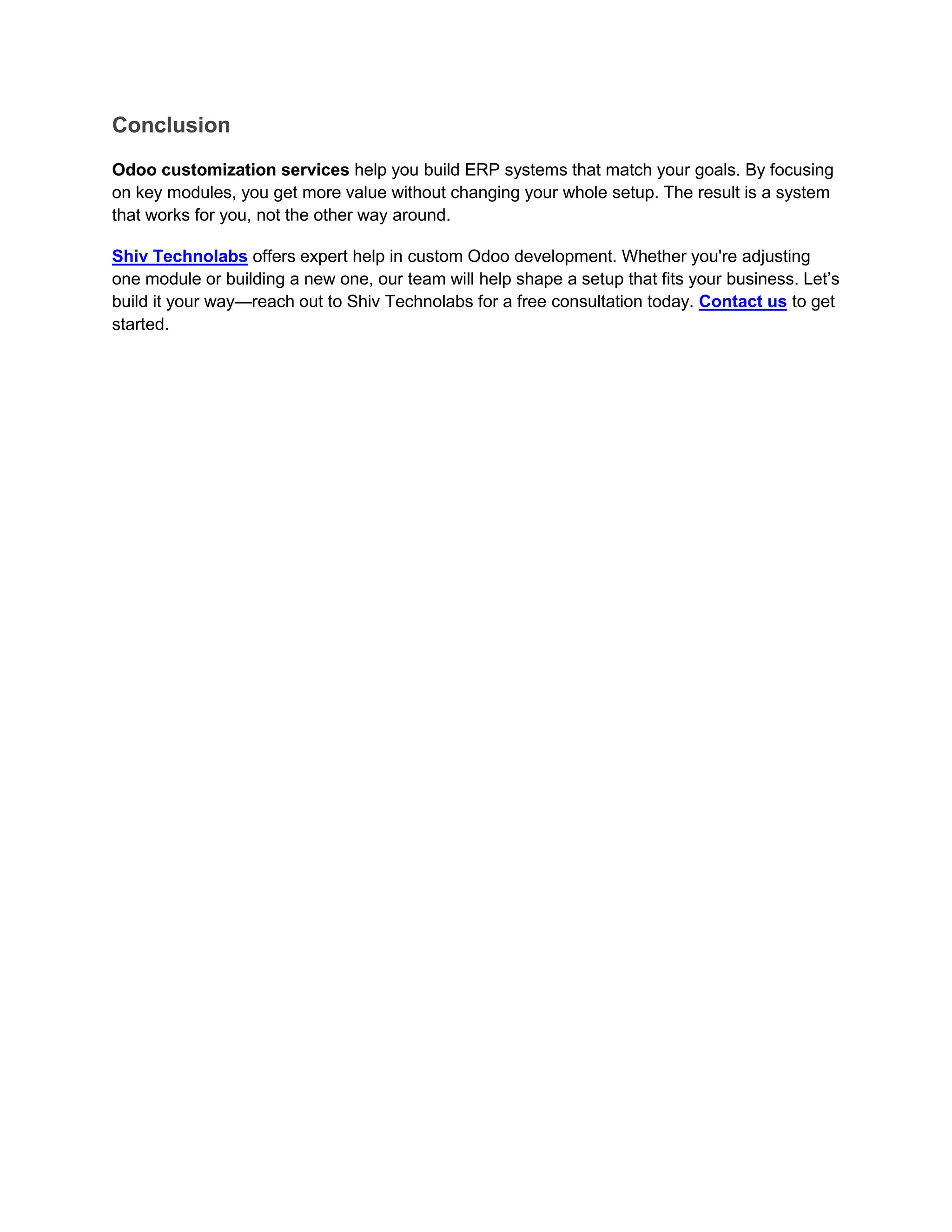Check out our latest blog to see how Odoo customization services can help change key Odoo ERP modules. We have discussed important modules like Sales, Purchase, Inventory, and Accounting. We also have explained how you can adjust each one to match your work style. This blog has covered finding simple tips on adding fields, setting rules, and connecting with other tools. We can help your team finish tasks faster and work with fewer errors. For more information, read our blog!
